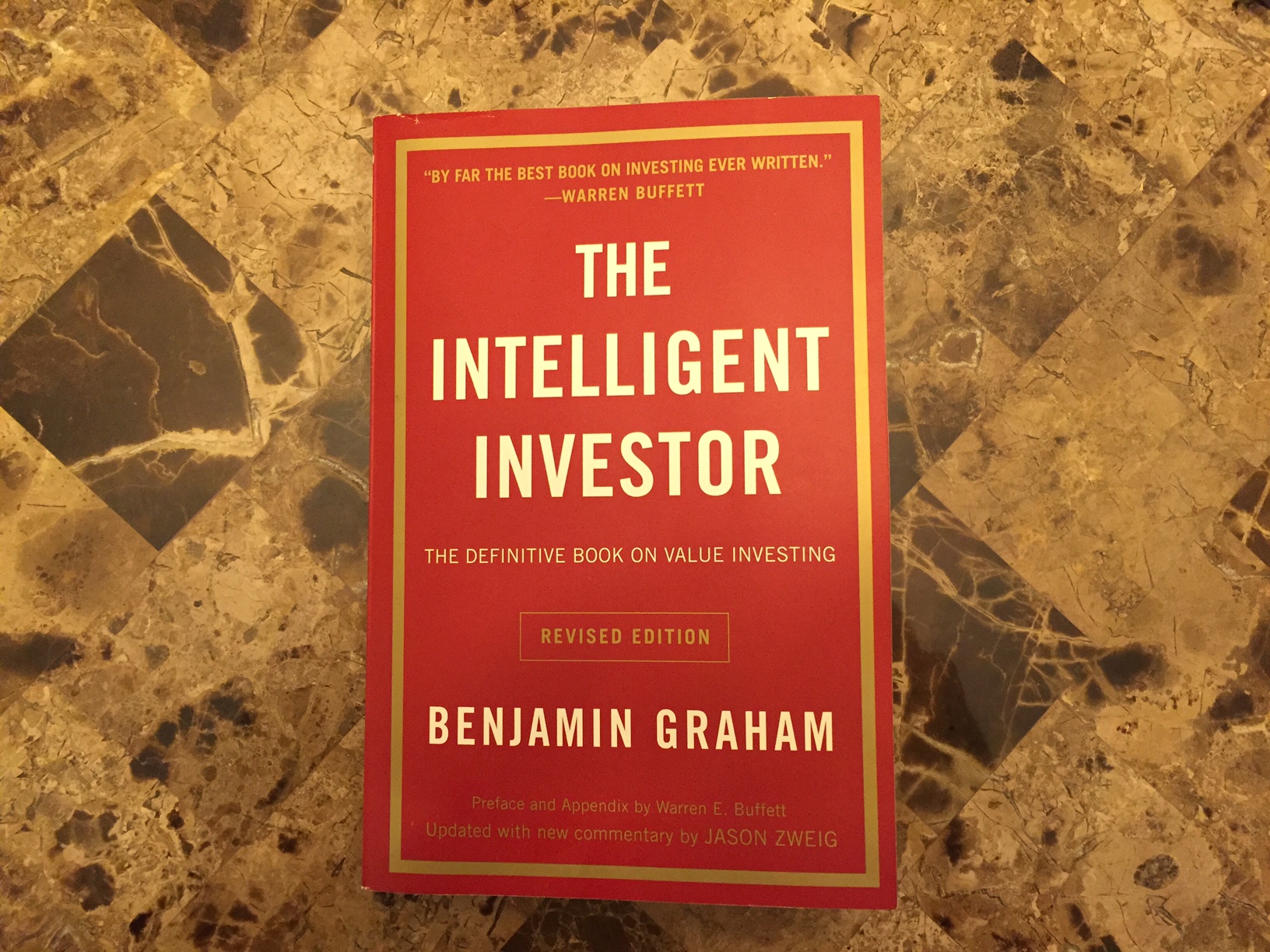With interest rates so low today, investors wonder where they can keep their money safe both in terms of their principal and purchasing power. We recently discussed Fixed Annuities as one substitute for CDs or bonds, with the conclusion that Annuities are best for investors over 59 1/2 who don’t need liquidity for at least five years. For others, one often overlooked option is Inflation-linked Savings bonds, officially known as Series I Bonds.
Five Things To Do When The Market Is Down
When the market is down, it hurts to look at your portfolio and see your account values dropping. And when we experience pain, we feel the need to do something. Unfortunately, the knee-jerk reaction to sell everything almost always ends up being the wrong move, a fact which although obvious in hindsight, is nevertheless a very tempting idea when we feel panicked.
Even when we know that market cycles are an inevitable part of being a long-term investor, it is still frustrating to just sit there and not do anything when we have a drop. What should you do when the market is down? Most of the time, the best answer is to do nothing. However, if you are looking for ways to capitalize on the current downturn, here are five things you can do today.
1) Put cash to work. The market is on sale, so if you have cash on the sidelines, I wouldn’t hesitate to make some purchases. Stick with high quality, low-cost ETFs or mutual funds, and avoid taking a flyer on individual stocks. If you’ve been waiting to fund your IRA contributions for 2015 or 2016, do it now. Continue to dollar cost average in your 401k or other automatic investment account.
2) If you are fully invested, rebalance now; sell some of your fixed income and use the proceeds to buy more stocks to get back to your target asset allocation. Of course, most investors who do it themselves don’t have a target allocation, which is their first mistake. If you don’t have a pre-determined asset allocation, now is a good time to diversify.
3) Harvest losses. In your taxable account, look for positions with losses and exchange those for a different ETF in the same category. For example, if you have a loss on a small cap mutual fund, you could sell it to harvest the loss, and immediately replace it with a different small cap ETF or fund.
By doing an immediate swap, you maintain your overall allocation and remain invested for any subsequent rally. The loss you generate can be used to offset any capital gains distributions that may occur later in the year. If the realized losses exceed your gains for the year, you can apply $3,000 of the losses against ordinary income, and the remaining unused losses will carry forward to future years indefinitely. My favorite thing about harvesting losses: being able to use long-term losses (taxed at 15%) to offset short-term gains (taxed as ordinary income, which could be as high as 43.4%).
4) Trade your under-performing, high expense mutual funds for a low cost ETF. This is a great time to clean up your portfolio. I often see individual investors who have 8, 10, or more different mutual funds, but when we look at them, they’re all US large cap funds. That’s not diversification, that’s being a fund collector! While you are getting rid of the dogs in your portfolio, make sure you are going into a truly diversified, global allocation.
5) Roth Conversion. If positions in your IRA are down significantly, and you plan to hold on to them, consider converting those assets to a Roth IRA. That means paying tax on the conversion amount today, but once in the Roth, all future growth and distributions will be tax-free. For example, if you had $10,000 invested in a stock, and it has dropped to $6,000, you could convert the IRA position to a Roth, pay taxes on the $6,000, and then it will be in a tax-free account.
Before making a Roth Conversion, talk with your financial planner and CPA to make sure you understand all the tax ramifications that will apply to your individual situation. I am not necessarily recommending everyone do a Roth Conversion, but if you want to do one, the best time is when the market is down.
What many investors say to me is that they don’t want to do anything right now, because if they hold on, those positions might come back. If they don’t sell, the loss isn’t real. This is a cognitive trap, called “loss aversion”. Investors are much more willing to sell stocks that have a gain than stocks that are at a loss. And unfortunately, this mindset can prevent investors from efficiently managing their assets.
Hopefully, now, you will realize that there are ways to help your portfolio when the market is down, through putting cash to work, rebalancing, harvesting losses for tax purposes, upgrading your funds to low-cost ETFs, or doing a Roth Conversion. Remember that market volatility creates opportunities. It may be painful to see losses today, but experiencing the ups and downs of the market cycle is an inevitable part of being a long-term investor.
What To Do With Your CD Money
If you’ve had CDs mature over the past several years, you’ve faced the unfortunate reality of having to choose between reinvesting into a new CD that pays a miniscule rate, or moving your money into riskier assets and giving up your guaranteed rate of return and safety. Although you can earn a higher coupon with corporate bonds than CDs, those investments are volatile and definitely not guaranteed. I understand the desire for many investors to keep a portion of their money invested very conservatively in ultra-safe choices. So, I checked Bankrate.com this week for current CD rates on a 5-year Jumbo CD and here is what is offered by the largest banks in our area:
Bank of America 0.15%
JPMorgan Chase 0.25%
Wells Fargo 0.35%
Citibank 0.50%
BBVA Compass 0.50%
While there are higher rates available from some local and internet banks, it is surprising how many investors automatically renew and do not search for a better return. Others have parked their CD money in short-term products or cash, hoping that the Fed’s intention of raising rates in 2016 will soon bring the return of higher CD rates.
Unfortunately, it’s not a given that the economic conditions will be strong enough for the Fed to continue to raise rates in 2016 as planned. This week, the 10-year Treasury yield dropped below 2%, which is not strong endorsement of the likelihood of CD rates having a major rebound in 2016.
This is the new normal of low interest rates and slow growth. While rates could be nominally higher in 12 months, it seems very unlikely that we will see 4% or 5% yields on CDs anytime in the immediate future. Waiting out in cash is a sure-fire way to not keep up with inflation and lose purchasing power.
What do I suggest? You can keep your money safe – and earn a guaranteed rate of return – with a Fixed Annuity. I only recommend Fixed Annuities with a multi-year guaranteed rate. Like a CD, these have a fixed interest rate and set term. At the end of the term, you can take your investment and walk away.
Today, we can purchase a 5-year annuity with a rate of 2.9% to 3.1%, depending on your needs. I know that’s not a huge return, but it’s better than CDs, savings accounts, Treasury bonds, or any other guaranteed investment that I have found. Since an annuity is illiquid, I suggest investors set up a five year ladder, where each year 20% (one-fifth) of their money matures. When each annuity matures, you can keep out whatever money you need, and then reinvest the remainder into a new 5-year annuity.
The beauty of a laddered approach is that it gives you access to some of your money each year and it will allow your portfolio to reset to new interest rates gradually as annuities mature and are reinvested at hopefully higher rates. In the mean time, we can earn a better return to keep up with inflation and keep your principal guaranteed.
Issued by insurance companies, Annuities have a number of differences from CDs. Here are the main points to know:
- Annuities typically have steep penalties if you withdraw your money early. It’s important to always have other sources of cash reserves for emergencies. Consider an annuity as illiquid, and only invest long-term holdings.
- If you take money out of an annuity before age 59 1/2, there is a 10% premature distribution penalty, just like a retirement account. A 5-year annuity may be best for someone 55 or older.
- Money in annuity grows tax-deferred until withdrawn. If you rollover one annuity to another, the money remains tax-deferred. Most annuities will allow you to withdraw earnings without penalty and take Required Minimum Distributions (RMDs) from IRAs. Always confirm these features on an annuity before purchase.
- While CDs are insured by the FDIC, annuities are guaranteed at the state level. In Texas, every annuity company pays into the Texas Guaranty Association, which protects investors up to $250,000. If you have more than this amount to invest, I would spread it to multiple issuers, to stay under the limit with each company.
If you have CDs maturing and would like to learn more about Fixed Annuities, please contact me for more information.
Are Smart Beta ETFs Right for You?
Over the past several years, you may have heard about “Smart Beta ETFs”. Today, we will look at this concept and share some very important caveats that investors should know before they purchase a Smart Beta ETF for their portfolio. While the name sounds like it would be a sure thing, it is important for investors to understand that there is no guarantee that Smart Beta products will be able to deliver on their promises.
The first ETFs were all index funds, tracking major indices like the S&P 500 or the Dow. As ETFs grew in popularity, investment companies quickly added products representing other indices, sectors, styles, and countries. ETF companies will continue to create hundreds of new products each year to raise new assets and be able to charge more fees. Once every traditional index was replicated in an ETF, companies had to find more creative offerings. Will every product work and be successful? No, but there is such a pronounced first-mover advantage in the industry that many companies are willing to take the risk of launching dozens of new funds hoping that some will be a success.
The knock on traditional index ETFs is that they are weighted by market capitalization. That simply means that each stock is represented according to its total market value. What’s wrong with that? If you went back to 1999, Cisco briefly became the largest stock in the world, trading at over 100 times earnings. At that time, it represented more than 3% of every index fund. And when the stock fell by 90% during the tech crash, every index fund had a large loss. The problem with traditional index funds is that they have too much of the overvalued stocks and too little of the undervalued companies.
Smart Beta ETFs seek to avoid this issue of overweighting the most expensive stocks by using alternative weighting or selection criteria. Like an Index, Smart Beta is a hands-off strategy that is quantitatively driven and passive. There are quite a few different approaches to Smart Beta, including weighting by:
– Dividends (stocks represented by the size of their dividend stream)
– Volatility (emphasizing the Lowest Volatility stocks or combination of stocks)
– Fundamentals (such as book value, sales, or earnings)
– or even, equal weighted, where each company receives the same weight in the fund.
Here are five points you should consider before selecting a Smart Beta ETF.
1) Traditional indexing works well.
While the concern of overweighting expensive stocks sounds legitimate, I’d like to point out that in spite of this supposed flaw, a vast majority of actively managed funds fail to beat their benchmark over five years. According to the S&P Index Versus Active report, as many as 80% of active managers fall short. If it was so easy to pick out the undervalued stocks from the overvalued stocks, wouldn’t more fund managers be able to beat the market cap weighted index?
Everyone is looking for a way to out perform the market, but this remains very difficult to do. It will be interesting in 10 years to see how many of today’s Smart Beta products will have delivered superior returns.
2) Back-tested strategies do not always work as well going forward.
Smart Beta ETFs are created based on academic research looking at factors which would have produced strong returns historically. This is generally done using back-tested data, which gives us another concern. If we looked at stocks from 2000-2015, it was a very unusual period. Will the factors which worked over the past 10 or 15 years continue to generate market beating returns over the next 10 or 15 years? No one knows the answer to that; the future could be quite different than the past and back-tested strategies may not perform as hoped.
3) Smart Beta may be out of favor for extended periods.
The back-tested results look promising, with Smart Beta strategies beating their benchmarks, had the ETFs existed. While the long-term hypothetical returns look good, there can be stretches when this strategy is out of favor. It may have outperformed over 10 years, but it may have lagged in four, five, or even six of those years, only to make it up by strong performance in a couple of years. If you buy a Smart Beta ETF today, will you hold on to it if it lags the market for two years in a row? Three years in a row?
Some Smart Beta strategies correlate strongly with Value and will lag when Growth is in favor. Other strategies are defensive and will trail the market during bull markets and only enhance performance in bear markets. This makes for a difficult decision as to whether or not the current market is the right environment for a particular approach or factor. This creates the potential for market timing errors if investors chase returns by switching from one ETF to another, trying to capture the most advantageous style for any given year.
4) Smart Beta ETFs may be less diversified.
Since Smart Beta funds emphasize certain characteristics such as dividends, the funds may have a high concentration in specific sectors such as utilities, financials, or energy. In the years where those sectors perform poorly, Smart Beta funds could be volatile and disappointing.
5) Costs
Lastly, it’s not certain that the benefits of all Smart Beta funds will accrue to investors once we factor in the expense ratio, trading costs, and taxes. Luckily, ETFs are becoming highly competitive in terms of expenses, so many funds launched in the last two years have extremely low expense ratios. While we know the expense ratio, we don’t know what trading costs are incurred when a Smart Beta strategy buys and sells stocks, which most do on a quarterly or annual basis.
I’ve listed these five concerns about Smart Beta ETFs because I want to dispel the notion that these funds are a sure bet. However, I do think they are interesting and show promise. Perhaps some will deliver results. And this is another conundrum for investors: there are so many flavors of Smart Beta strategies today that we run the risk of picking the wrong one, and we end up with the fund that under performs. So this is not the simple choice of just replacing all of your traditional ETFs with a Smart Beta version and being guaranteed better results.
We’ve spent a lot of time analyzing Smart Beta ETFs and have included several in our clients’ portfolios. If you are looking to hand off your portfolio management to a professional, we are here to help. And while we manage your funds, we also take the time to explain our process, philosophy, and why we own each position.
The Investor and Market Fluctuations
In 1934, Benjamin Graham first published his treatise “The Intelligent Investor”. Graham is considered by many to be the father of Value Investing and was a teacher of Warren Buffett. He wrote about the difference between investing and speculating, and devoted a whole chapter to “The Investor and Market Fluctuations.” I can do no better than to share this excerpt and to note that his advice is as true today as it was 80 years ago.
“The most realistic distinction between the investor and the speculator is found in their attitude toward stock-market movements. The speculator’s primary interest lies in anticipating and profiting from market fluctuations. The investor’s primary interest lies in acquiring and holding suitable securities at suitable prices. Market movements are important to him in a practical sense, because they alternately create low price levels at which he would be wise to buy and high prices at which he certainly should refrain from buying and probably would be wise to sell.
It is far from certain that the typical investor should regularly hold off buying until low market levels appear, because this may involve a long wait, very likely the loss of income, and the possible missing of investment opportunities. On the whole it may be better for the investor to do his stock buying whenever he has money to put in stocks…
Aside from forecasting the movements of the general market, much effort and ability are directed on Wall Street toward selecting stocks or industrial groups that in matter of price will “do better” than the rest over a fairly short period in the future. Logical as this endeavor may seem, we do not believe it is suited to the needs or temperament of the true investor… As in all other activities that emphasize price movements first and underlying values second, the work of many intelligent minds constantly engaged in this field tends to be self-neutralizing and self-defeating over the years.
The investor with a portfolio of sound stocks should expect their prices to fluctuate and should neither be concerned by sizable declines nor become excited by sizable advances.”*
As much as markets have changed over the past century, what has not changed is human nature. That’s why Graham’s advice to never sell a stock just because it has gone down remains so relevant today. Be an investor and not a speculator; don’t think that you can predict what stock prices are going to do next. If you’re in it for the long-term, use market volatility as an opportunity to put money to work.
*The Intelligent Investor, Benjamin Graham, `Revised Edition, 2006, pp. 205-206.
Exchange Traded Funds Gain in Popularity
According to a report from Blackrock this week, investors poured $347 Billion in Exchange Traded Funds (ETFs) in 2015. In recent years we have seen the shift from mutual funds to ETFs continue and even accelerate. While we don’t have numbers for mutual funds for 2015 quite yet, according to the Investment Company Institute, investors had already pulled $47 Billion from mutual funds as of November 30, 2015.
Even though ETFs continue to take market share from mutual funds, I find that many folks who have invested primarily in a 401(k) still aren’t very familiar with ETFs. Here are some of the reasons we are big fans of ETFs.
- ETFs generally use passive strategies, such as tracking an index, or selecting stocks based on specific criteria. Since the majority of active managers fail to beat their benchmark over five years, passive strategies are a logical choice.
- ETFs are very low cost, since passive strategies don’t require a large research staff or highly paid managers. And in a low return world, it can be very difficult for an actively managed fund with 1.10% in expenses to beat a passive ETF which has expenses of 0.10%.
- ETFs are typically more tax efficient than mutual funds. Quite a few mutual funds distributed capital gains at the end of 2015. If you held those funds in a taxable account, you’d owe taxes, even though you didn’t sell any of your shares. If you had ETFs in your taxable account, your tax bill may have been much, much lower, or even zero.
- ETFs offer diversification, transparent holdings, and style consistency. That’s why they make great building blocks to construct an efficient portfolio.
Wonder how your mutual funds stack up against ETFs? Call me for a free portfolio review and we will be happy to take a look and share our recommendations.
The Year Ahead in Equities
We began 2015 with the following the following observations about the equity markets: US stocks were fully valued and ripe for a possible correction. Small cap stocks were trading at a premium to large cap and should not be overweighted. European equities were cheaper than US stocks, while their economic recovery continued to lag the US recovery. Emerging markets equities were trading at a significant discount to developed markets, which was related to declining commodity prices.
12 months later, as we near the close of 2015, all of these factors remain in place, and at an even more exaggerated level than at the beginning of the year.
US large cap stocks did finally have a correction of 10% at the end of August. While the fear was that this correction would become the start of a bear market, instead, markets snapped back smartly and erased those losses by early October. That’s the good news. The bad news is that we have failed to make new highs in Q4 and the market seems to be range bound, trading around the same levels that frustrated investors in the first half of the year.
Looking forward to 2016, earnings for the S&P 500 Index are expected to be under pressure from two factors. First, the remarkable collapse in oil prices has decimated earnings in the energy sector. Second, the strong dollar is a headwind to multi-national companies who either export US goods overseas (which are now quite expensive to foreign consumers), and earnings of foreign subsidiaries appear smaller, when translated back into US dollars. As a result, earnings for the S&P 500 could actually show negative growth this quarter and may show little growth for all of 2016. And if there’s no growth, the current price to earnings ratio of 18.5 seems difficult to justify.
For US Small Cap stocks, years of strong performance pushed valuations to high levels. While large caps sport a PE ratio of 18.5, the small cap Russell 2000 Index has an even more bloated valuation of 20.8.
Foreign developed stocks greatly lagged US stocks in 2014, when they were down 5% versus a gain of 13% for their US counterparts. For 2015, both US and Foreign stocks are almost flat on the year. Looking forward, the important difference is valuation. While US stocks have a PE of 18.5, foreign stocks are cheaper, with a PE of 16. International stocks have much better valuations across the board, including price/book, price/sales, and dividend yield.
While the US recovery seems to have been in place for several years, the fact that Europe’s recovery has been delayed gives some hope that their stocks also have some catching up to do.
Emerging Markets have had a dismal 2015, down 16% year to date. In sprite of the carnage, valuations are very cheap, and demographics are favorable for long-term growth. While GDP growth in the US, Europe, and Japan risks being crowded out by government debt and retiree costs, Emerging Market economies remarkably have lower debt levels and a better balance sheet.
EM is being held back in part by low commodity prices, which are the largest source of trade revenue for many countries. As a contrarian, if you compare the past 5 years of performance in EM versus US stocks, and look at current valuations, you have to believe that these divergent results are going to inevitably reach an inflection point. Will that occur in 2016? No one knows, but we will maintain our holdings in EM and wait for a reversion to the mean.
I’ve been bearish on Commodities for several years. At my previous firm, we did hold a multi-million dollar piece of commodities within our equity allocation. In 2013, I suggested we exit the space, which we did, sparing our investors from substantial losses. Now with oil futures trading at $35/barrel, I’m starting to wonder how much lower can they go? Will we breach the $32/barrel price we saw in 2009, at the depths of the global recession? Production is being shuttered across commodity producers around the globe, and yet short-term supplies remain high.
I don’t know when commodity prices will stop falling, but I have to believe we are closer to the 8th or 9th inning of this decline and not somewhere in the middle. At some point, it will make sense for investors to have a small piece of commodities, as it offers a possible inflation hedge, and can be uncorrelated to both equities and fixed income, where we face rising risks.
We will be making small changes to our model portfolios in January to reflect the current state of fixed income and equity markets. While we are somewhat tactical in our approach, we don’t want to give the impression that these trades are the primary source of investment performance. Ultimately, the most important part of investing is staying diversified, keeping costs down, and rebalancing periodically.
Source of data: Morningstar as of 12/20/2015
The Year Ahead in Fixed Income
At the end of each year, we review the landscape for fixed income and equities, looking for opportunities and themes to use in our model investment portfolios. With this information, we adjust the weight of asset categories based on their relative risk/reward, and also decide which satellite categories offer the most interesting ways to enhance and complement our core holdings. This week, we start with a look at fixed income.
With today’s low interest rates, it should come as no surprise that the Aggregate Bond Index is only up 1.17% through December 11 this year. This small number belies the potential risks to the bond market in 2016, including the possibility for rising rates to crush long-term bond prices, falling credit quality and increased defaults in the energy sector, and the many unknowns about the rising US dollar and future inflation. And perhaps the only thing worse than seeing inflation tick up in 2016 would be seeing no inflation, a sign that the global economy could be moving back into recession.
The Federal Reserve is meeting on Tuesday and Wednesday this week, and many on Wall Street are watching to see if the committee is finally ready to raise the Fed Funds rate. This will likely be a major focus of the business news of the week, but in spite of all the attention paid to deciphering the Fed’s actions and comments, this is not a reason to be making knee-jerk reactions to Fixed Income holdings.
We see four major themes which will shape how we allocate to Fixed Income in 2016:
1) An emphasis on shorter duration. Whether or not the Fed raises rates this week, we are at a point in time at which the rates on 20-30 year bonds are artificially low. If we consider the yield to maturity as the potential reward for buying these bonds, then the risk we face in terms of a significant decline in price, as well as the opportunity cost to have purchased binds at a higher yield, is too great.
Within all our portfolios, we will look to reduce risk in our Fixed Income holdings, emphasizing shorter duration while maintaining or improving credit quality. We’re not interested in speculating on bonds, which is precisely what many investors are doing today with long-term bonds.
2) Sticking with high yield. We already have positioned our high yield holdings into a short duration fund, the SPDR Short-Term High Yield ETF (SJNK). SJNK has taken a beating this year, down 6.49% as of 12/11. While it’s easy to see the challenges facing high yield, the lower prices present a more attractive value than we’ve had in several years in the category. Today, the fund has an average maturity of only 3.12 years, an average bond price of $95.03, and a yield to maturity of 9.42%. In small portions, this short-term high yield position may help enhance our returns.
3) Municipal Bonds. Municipal Bonds have been held back by concerns about over-leveraged entities such as Detroit and Puerto Rico. At the start of 2015, munis were trading at a discount to other bonds, and that discount gave way to a strong performance in 2015. Even though they have come up in price somewhat, for investors in a higher tax bracket, municipal bonds remain very attractive compared to corporate or treasury bonds. For clients with large taxable holdings, we will likely add to municipal bonds in 2016.
4) Fixed Annuities. I’ve always admired the simplicity of a laddered portfolio of high quality bonds or CDs. In recent years, investors have gotten away from this approach, as they searched for higher yields elsewhere. Unfortunately, there is no free lunch – higher yields come with higher risks – and investors who always seek the highest yielding investments sometimes end up with losses rather than the high returns they had hoped for.
For investors who are 55 or older, who do not need liquidity from their holdings, consider creating a ladder of 5-year fixed annuities, buying one-fifth a year over 5 years. Today, we can buy a 5-year annuity at 3.10%, which is not bad for an investment with a guaranteed return. To get the same yield to maturity on a 5-year bond, we’d have to go a BBB-rated issuer or lower. The annuity may also be a good replacement for a CD, if you are disappointed with today’s rates when your CDs mature.
A laddered 5-year annuity portfolio could make sense for conservative investors because it offer a guaranteed rate of return, preservation of capital, and income, none of which are guaranteed with most other types of bonds. The main trade-off would be liquidity, but if you have a 5-year ladder, you’d have access to 20% of your principal each year. I’ve looked at other annuity durations, but feel that the 5-year is the sweet spot today. Shorter terms have a much lower interest rate, while longer terms do not see much of an increase over the 5-year product.
We will use these four themes to help customize each of our client’s fixed income holdings, even though changes to the model portfolios are likely to be relatively small. We have low expectations from fixed income for 2016 and the next several years. Our focus is not “how can we make as much as possible from bonds”. Rather, we view fixed income as a counter-weight to the risk we take in equities; its main purpose is to reduce the volatility of the overall portfolio. That’s why we want to be very careful about taking risks in fixed income at a time which might be the end of the falling interest rates which have boosted bond prices over the past 35 years.
Today, equities are near a high, even as the global economy struggles to sustain a recovery. Prices in fixed income are also at a high. This is a dangerous time for investors who have become greedy with yield in the recent period of rock-bottom rates. Once rates do begin to rise, fixed income will face a tough road, and that could become a very ugly situation if the stock market is also impacted by rising interest rates, decreased liquidity for corporations, and increased defaults.
Real Estate prices, fueled by cheap mortgages today, will also struggle to rise if homeowners cannot afford higher payments, and commercial Real Estate prices won’t be attractive to investors if cap rates are lower than bonds. I point this out not because I expect a crisis, but only because investors need to understand the potential impacts of higher interest rates in 2016 and ahead.
Next week: the outlook for Equities in 2016.
Source of data: Morningstar as of 12/14/2015
Why You Should Harvest Losses Annually
This time each year, I review every client’s taxable accounts in search of losses to harvest for tax purposes. While no one likes to have a loss, the reality is that investments fluctuate and have down periods, even if the long-term trend is up. I’ll be contacting each client in the next two weeks and will let you know if I suggest any trades.
Even though we may make some sales, we still want to maintain our overall target asset allocation. Under US tax rules, we cannot buy a “substantially identical security” within 30 days in order to claim a tax loss. This precludes us from taking a loss and immediately buying back the same ETF or mutual fund. It does not however, prevent us from selling one large cap ETF and buying a different ETF that tracks another large cap index or strategy. This means that we can harvest the loss without being out of the market for 30 days and missing any potential gains during that time.
When we harvest losses, we can use those losses to offset any gains we have received and reduce our taxes in the current year. The criticism against tax loss harvesting is that it just serves to postpone taxes rather than actually saving taxes.
For example, let’s say that we purchased 10,000 shares of an ETF for $10 per share and today those shares are only worth $9.00. Our cost basis is $100,000 and if we sold today for $90,000 we could harvest a loss of $10,000. We replace that position with a different ETF and invest our $90,000. Fast forward a couple of years and the position is now worth $120,000. If we sell for $120,000, we would have a $30,000 gain, whereas if we had not done the earlier trades, our gain would be only $20,000. Apply a long-term capital gains rate of 15% and the savings of $1,500 in taxes this year is offset by $1,500 in additional taxes down the road.
So, why bother? There is an additional benefit to tax loss harvesting besides deferring taxes for later: you may be able to use those losses to offset short-term capital gains or ordinary income, which can be at a much higher tax rate than the 15% long-term capital gains rate.
The rules for capital gains are that you first net short-term gains and short-term losses against each other. Separately, you will net long-term gains and long-term losses. If you have net losses in either category, those losses may be subtracted from gains in the other category. So if you had $10,000 in net long-term losses, you could apply those losses against $10,000 of short-term capital gains. For someone in the 35% tax bracket, that $10,000 long-term loss could be worth $3,500, if you can apply that loss towards short-term gains, instead of the $1,500 we would normally associate with a long-term loss.
If you have more capital losses than gains in a year, you can apply $3,000 of those losses against ordinary income, and carry forward the remaining losses into future years indefinitely, until they are used up. If we can use our $3,000 loss against ordinary income, a taxpayer in the 35% bracket will save $1,050 in taxes, which is a lot better than the $450 we would save in long-term capital gains if we did not harvest the $3,000 loss.
After deferring gains for many years, taxpayers may be able to avoid realizing gains altogether two ways. First, if you have charitable goals, you can give appreciated securities to a charity instead of cash. If you give $1,000 worth of funds to a charity, the charity receives the full $1,000; you get a full tax deduction AND you avoid paying capital gains on those shares.
The second way to avoid capital gains is if you allow your heirs to inherit your shares. They will receive a step-up in cost basis and no one will owe capital gains tax. That’s a rather extreme way to avoid paying 15% in capital gains taxes, and most people are going to need their investments for retirement. However, the fact is that delaying taxes can be beneficial and that the tax is not always inevitable.
The reason I share this is that the argument that tax loss harvesting only serves to delay taxes ignores quite a few benefits that you can realize. You may be able to use those capital losses not just to offset capital gains at 15%, but potentially to offset short-term gains at a much higher rate, or to offset $3,000 a year of ordinary income.
Since we primarily use ETFs, we already have a great deal more tax efficiency than mutual funds, and we should have little capital gains distributions for 2015. If you’re not with GLWM and have mutual funds in a taxable account, be aware that many mutual funds have announced capital gains distributions for the end of this year.
There are quite a few ways we aim to add value for our clients and we take special interest in portfolio tax optimization. If there’s a way to help you save money in taxes, that’s going to help you meet your financial goals faster.
How a Benchmark Can Reduce Home Bias
Home Bias is the tendency for investors to prefer, and greatly overweight, the stocks of their local, domestic companies to the detriment of their portfolio’s performance. If you lived in Sweden, where local equities comprise only 1% or so of the world’s equity markets, and still had most of your money in “domestic” stocks, you’d obviously be missing out on a great deal of opportunities and diversification.
From our vantage point here in the United States, the local Swedish investor is likely losing out by only investing locally. As obvious as that example appears to us, many US investors do the same thing. Today, US stocks comprise only half of the value of equities worldwide and represent only 25% of the total number of stocks. Both figures are likely to drop significantly in the decades ahead as foreign populations, economies, and stock markets grow at a pace much faster than here in America.
50 years ago, or even 25 years ago, it was difficult to invest in international equities, so investors stuck with local stocks out of necessity. Today it is as easy to invest in foreign stocks or bonds as it is to invest in domestic securities, and yet many investors still have little or no weighting in foreign holdings in their portfolios.
By allowing their Home Bias to persist, investors miss out on the benefits of diversification. Fidelity published a study this August, looking at US versus Foreign stock performance from 1950 through 2014. Over this period, US stocks had an annualized return of 11.3%, slightly ahead of the foreign stock return of 10.9%. Since foreign stocks lagged US stocks, you might think that adding them to a portfolio would make your return worse. Remarkably, that isn’t the case: a portfolio of 70% US / 30% Foreign equities produced a return of 11.4% over this period.
Adding foreign stocks improved returns because of diversification and rebalancing – when US stocks are down, foreign stocks may be up, or vice versa. In addition to increasing returns, the 70/30 mix also reduced volatility (standard deviation) from 14.4% to 13.1%. The Fidelity study is a great example of how diversification can help investors improve returns and lower risk at the same time. People who think that foreign stocks are riskier than US stocks aren’t looking at the bigger picture of what happens when you combine both types of stocks into one portfolio.
In recent years, US Stocks have performed well and as a result, carry a higher valuation today than Developed Market or Emerging Market stocks. If you are concerned about shifting some of your US funds to an international fund that has a worse 5-year track record, you may be placing too much weight on past performance – looking backward – rather than looking forward. The lower valuations found today in foreign stocks are a positive sign that there are opportunities for growth there. That’s no guarantee of what those stocks will do in the short-term, but generally, I think this is a smart time to be shifting from US to foreign stocks if you are underweight on the foreign side.
One of the ways we try to remove the behavioral “safety blanket” of familiar domestic equities, is through our benchmark. We run five portfolio models here at Good Life Wealth Management. Our benchmark for equities is the MSCI All-Country World Index (ACWI), and for a global portfolio that is a more appropriate benchmark than a US-only index like the S&P 500, Dow Jones Industrial Average, or the NASDAQ composite. The ACWI is currently 52% US Stocks and 48% Foreign stocks. I’m not saying that everyone needs to be invested in exactly that percentage (52/48), but by using the ACWI as a benchmark, we have the best measure of the performance of global equities. Then we can look at our own performance and see if the segment weightings we have selected were able to add value or not.
The internet has revolutionized business and today we truly have a world economy. It’s time that investors lose their Home Bias so they don’t miss out on the benefits of diversification. Using the All-Country World Index as our benchmark is a good way to start thinking globally in terms of our opportunities and how we create a portfolio.













